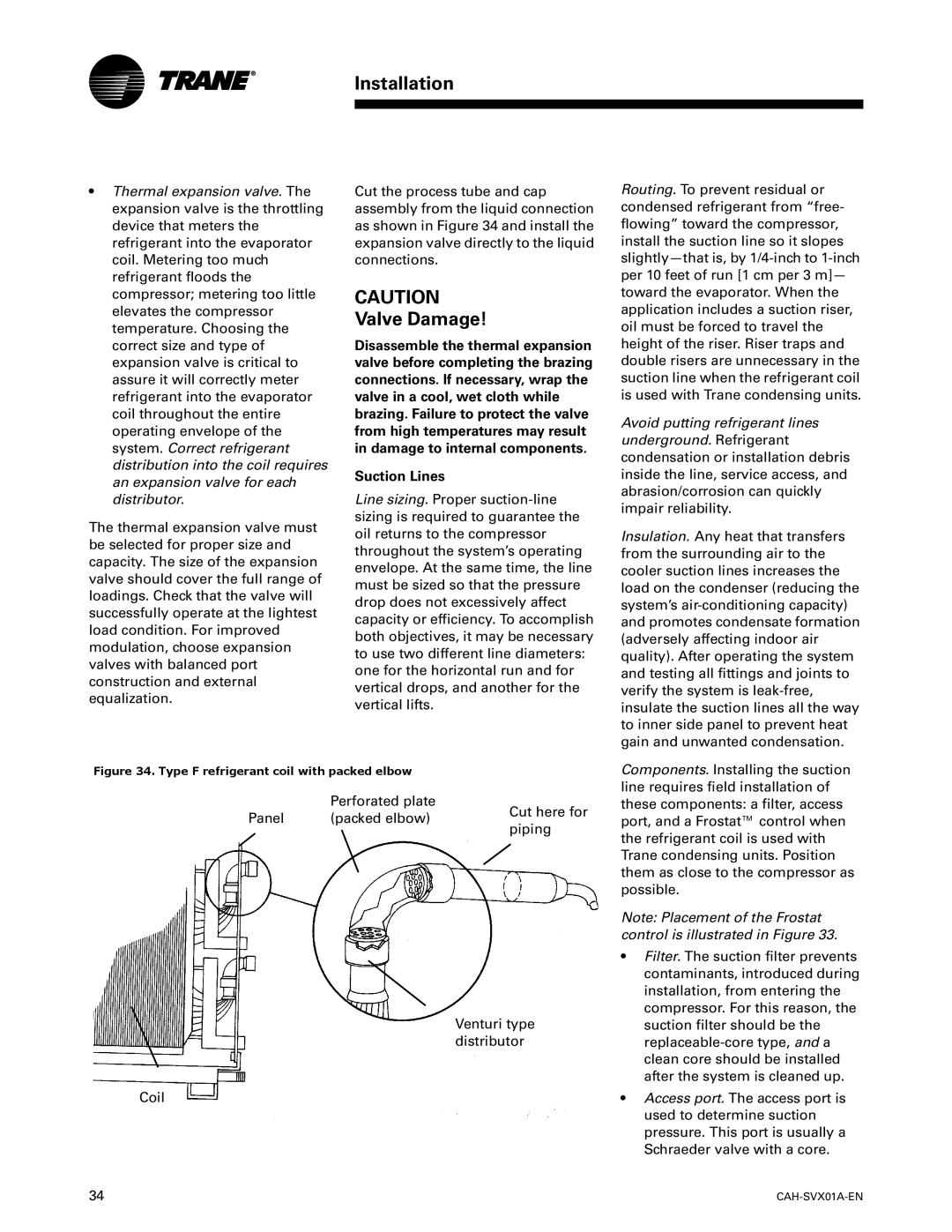
Installation
•Thermal expansion valve. The expansion valve is the throttling device that meters the refrigerant into the evaporator coil. Metering too much refrigerant floods the compressor; metering too little elevates the compressor temperature. Choosing the correct size and type of expansion valve is critical to assure it will correctly meter refrigerant into the evaporator coil throughout the entire operating envelope of the system. Correct refrigerant distribution into the coil requires an expansion valve for each distributor.
The thermal expansion valve must be selected for proper size and capacity. The size of the expansion valve should cover the full range of loadings. Check that the valve will successfully operate at the lightest load condition. For improved modulation, choose expansion valves with balanced port construction and external equalization.
Cut the process tube and cap assembly from the liquid connection as shown in Figure 34 and install the expansion valve directly to the liquid connections.
CAUTION
Valve Damage!
Disassemble the thermal expansion valve before completing the brazing connections. If necessary, wrap the valve in a cool, wet cloth while brazing. Failure to protect the valve from high temperatures may result in damage to internal components.
Suction Lines
Line sizing. Proper
Routing. To prevent residual or condensed refrigerant from “free- flowing” toward the compressor, install the suction line so it slopes
Avoid putting refrigerant lines underground. Refrigerant condensation or installation debris inside the line, service access, and abrasion/corrosion can quickly impair reliability.
Insulation. Any heat that transfers from the surrounding air to the cooler suction lines increases the load on the condenser (reducing the system’s
Figure 34. Type F refrigerant coil with packed elbow
| Perforated plate | Cut here for | |
Panel | (packed elbow) | ||
piping | |||
|
|
Venturi type distributor
Coil
Components. Installing the suction line requires field installation of these components: a filter, access port, and a Frostat™ control when the refrigerant coil is used with Trane condensing units. Position them as close to the compressor as possible.
Note: Placement of the Frostat control is illustrated in Figure 33.
•Filter. The suction filter prevents contaminants, introduced during installation, from entering the compressor. For this reason, the suction filter should be the
•Access port. The access port is used to determine suction pressure. This port is usually a Schraeder valve with a core.
34 |
|
